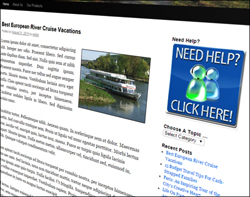 In Part 1 of this tutorial, we explained how to use WordPress widgets and in Part Two, we explained how to configure text widgets.
In Part 1 of this tutorial, we explained how to use WordPress widgets and in Part Two, we explained how to configure text widgets.
In Part 3, we began configuring various widgets in WordPress.
In this final installment, you are going to learn how to complete this tutorial series by configuring a few more useful widgets.
![]()
In WordPress v. 4.8, WordPress introduced new media widgets covering images, audio, and video, and an updated text widget that supports visual editing …
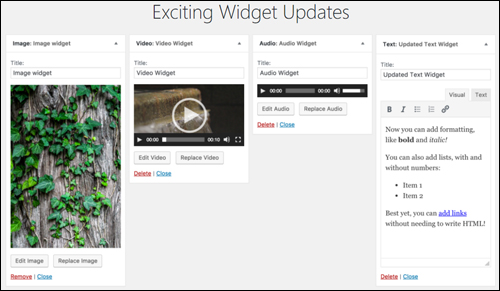
(WordPress 4.8 introduced new widget updates)
These widgets let you add content from your media library and media stored in other servers or storage locations (e.g. Google Drive, Dropbox, Amazon S3, etc.).
Let’s go through how to configure and use each of these widgets:
Rich Text Widget
From version 4.8 onward, WordPress has added native rich-text editing capabilities to text widgets …
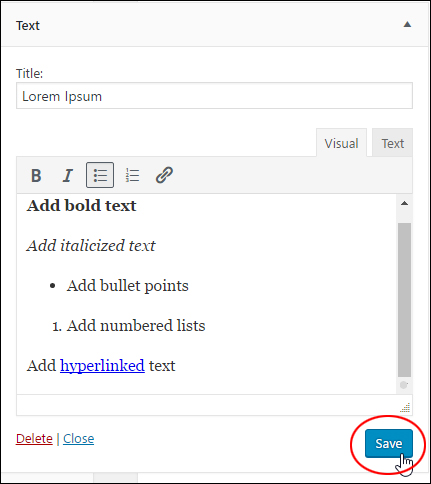
(Rich Text Widget)
This lets you format text, create lists, add emphasis, and insert links into your sidebar text quickly and easily …
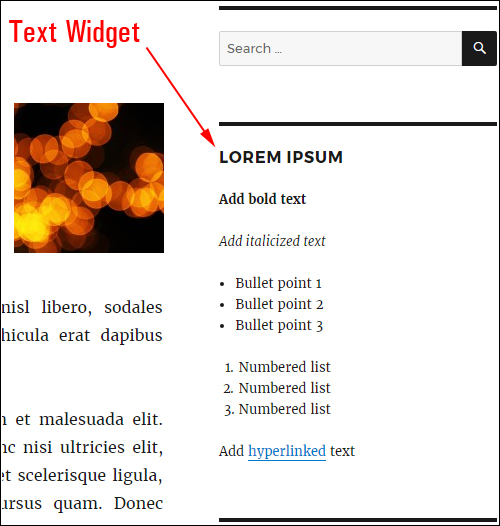
(Format text easily with the new text widget)
To learn more about using text widgets in WordPress, see the tutorial below:
WordPress Image Widget
The WordPress Image Widget lets you add an image to your sidebar from your Media Library or an external storage location.
To add an image, drag an image widget to your active widgets area …
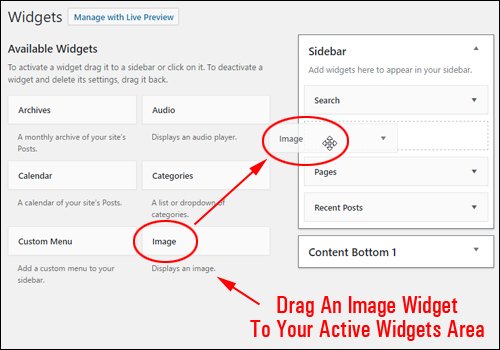
(Image Widget)
Click on ‘Add Image’ …
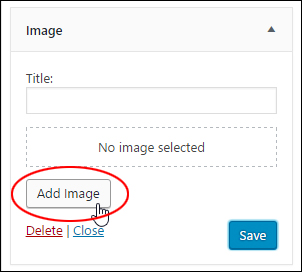
(Let’s add an image!)
Select an image from the Image Library, check or add image details (e.g. Caption, Alt text, Description, etc.) if desired and click the ‘Add to Widget’ button …
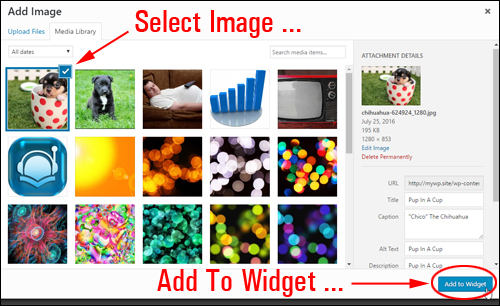
(Select an image)
The image will automatically load into the widget area …
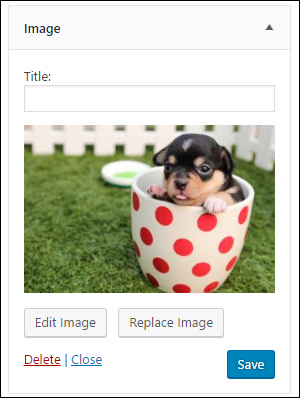
(Image added to widget)
Add a Title to your image if you want, or leave the ‘Title:’ field blank and click ‘Save’ …
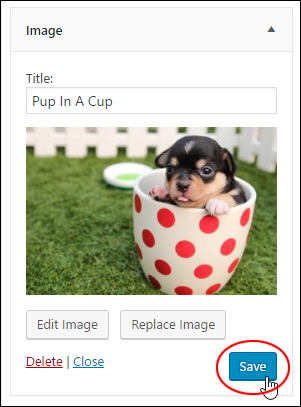
(Save your image)
Preview your website and you should see the image displayed where you have placed your image widget …
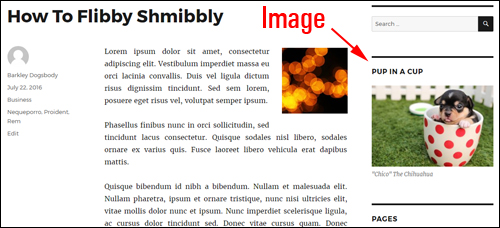
(Image added to website using WordPress image widget)
If you want to link your image to an URL, go back to your image widget and click on ‘Edit Image’ …
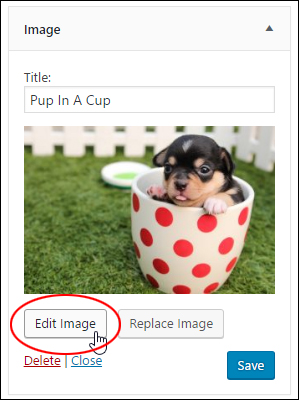
(Image Widget – Edit Image)
Add a URL in the ‘Image Details’ > ‘Display Settings’ > ‘Link To’ screen and click the ‘Update’ button …
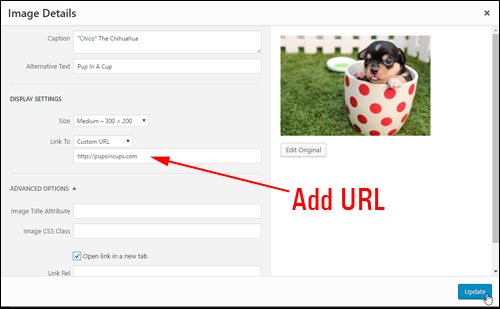
(Link your image to an URL)
To add an image stored in an external server or remote location, locate and copy the URL of the image to your clipboard …
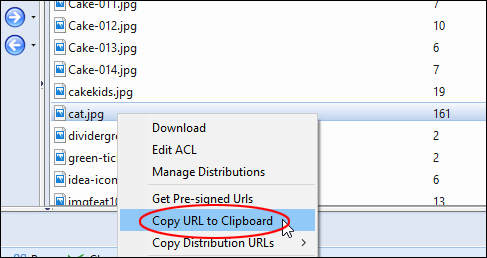
(Copy image URL to your clipboard)
Go back to your image widget and click on ‘Replace Image’ …
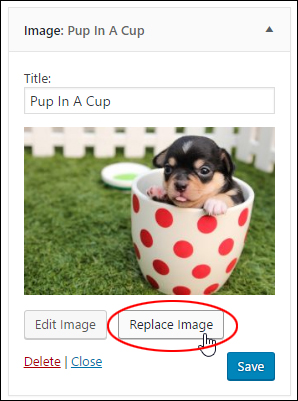
(Image Widget – Replace image)
The Media Library browser opens. Click on ‘Insert from URL’ and paste in the image URL copied to your clipboard, then click on ‘Add to Widget’ …
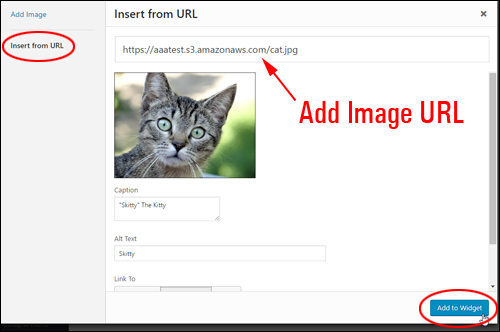
(Add image URL)
If you have previously added an image title in your widget, remember to replace it if required, then click ‘Save’ …
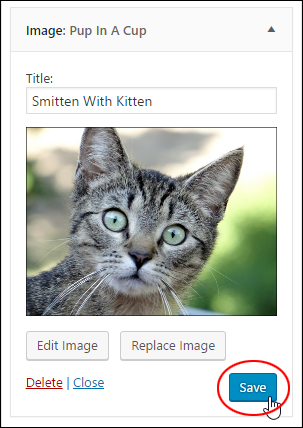
(Save your new image)
The new image will now display on your sidebar …
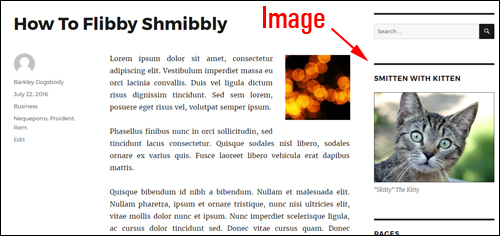
(New image added using WordPress image widget)
To learn more about adding images to WordPress, see this tutorial:
WordPress Video Widget
The WordPress Video Widget lets you add audio files to your sidebar from your Media Library, YouTube, Vimeo, or an external storage location.
To add a video to the sidebar, drag a Video widget to your active widgets area …

(Drag a Video widget to your sidebar)
Click the ‘Add Video’ button …
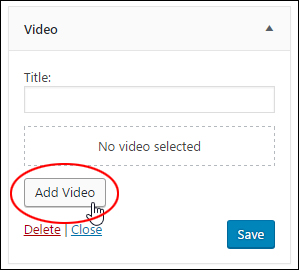
(Video widget – Add Video)
Select a video from your media library or add a video URL and click the ‘Add to Widget’ button …
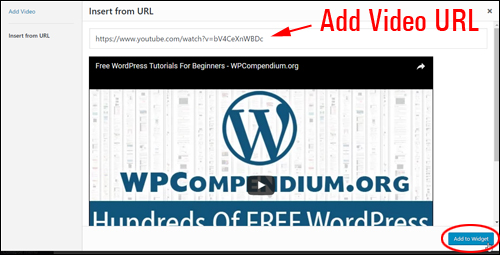
(Add a video URL)
Add a title to the widget if desired and click ‘Save’ …
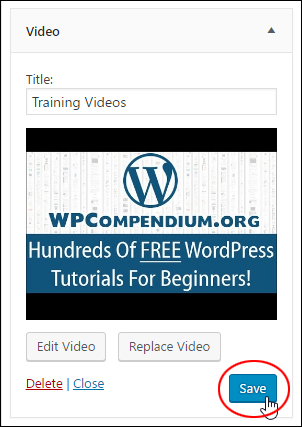
(WordPress Video Widget – Save Button)
Your video will display on your site where the video widget has been added …
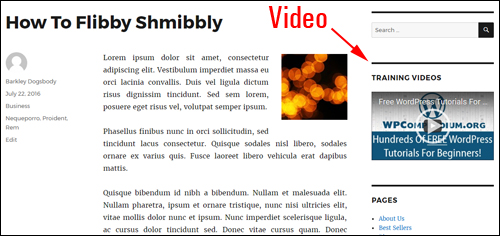
(Video added using WordPress video widget)
To learn more about adding video to WordPress, see this tutorial:
WordPress Audio Widget
The WordPress Audio Widget lets you add audio files like podcasts, music or a personal greeting to your sidebar from your media library or an external storage location.
To add an audio file to your sidebar, drag an audio widget to your active widgets area …
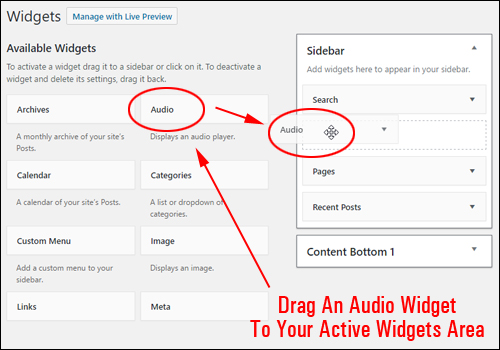
(Add an audio widget to your sidebar)
Click the ‘Add Audio’ button…

(WordPress Audio Widget – Add Audio button)
Select an audio file from your media library or insert the URL of an audio file stored in an external location …
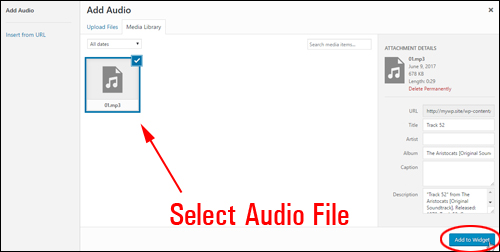
(Select your audio file)
Add a title to your widget if desired and click the ‘Save’ button …
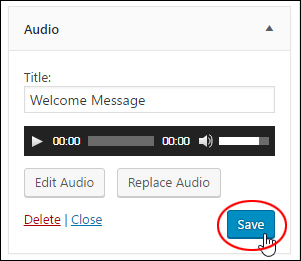
(Save the audio file on your audio widget)
Your site will now display an audio file to visitors where you have placed the audio widget …
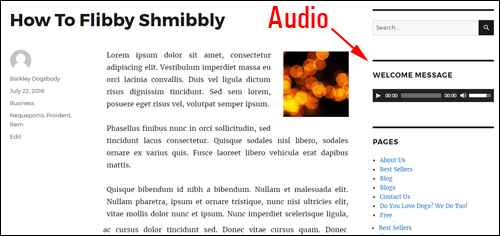
(Audio file added to your site using the WordPress Audio Widget)
To learn more about adding audios to WordPress, see this tutorial:
Adding A Newsfeed Section
Let’s add An RSS widget to the sidebar.
To add the widget, select an RSS widget in the Available Widgets section and drag it to your active area …

(WordPress RSS Widget)
Enter the following information into the widget settings:
- RSS feed URL: Paste the RSS feed URL here.
- Feed Title: If you want to add a widget feed, type it into this section.
- Items to display: Select how many items you want to show on your sidebar from this drop-down menu.
- Display item content: Tick this box if you would like to display the feed item content.
- Display item author: Tick this box if you would like to display the RSS feed item author.
- Display item date: Check this box if you would like to show the RSS feed item date.
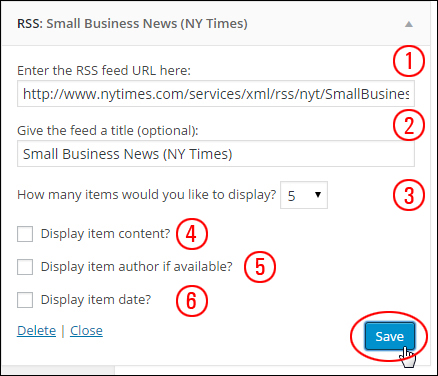
(RSS Widget settings)
Experiment with different widget settings to find the ideal combination for you.
The screenshot below shows a published RSS widget configured using the settings shown above …
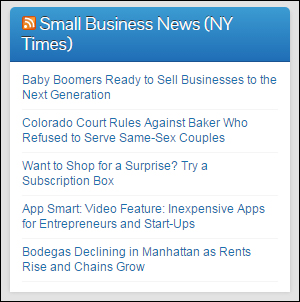
(WordPress RSS Widget added to sidebar)
The example below shows an RSS Feed widget configured using some of the other options selected …
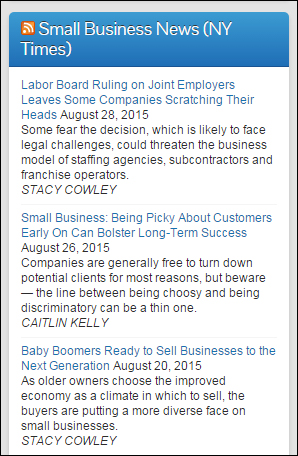
(RSS Widget settings)
To learn more about using RSS feeds in WordPress, see this tutorial:
Adding A Tag Cloud
Let’s add a widget to your sidebar navigation section that displays tags.
![]()
Tags displayed in the widget are managed in the Tags section …
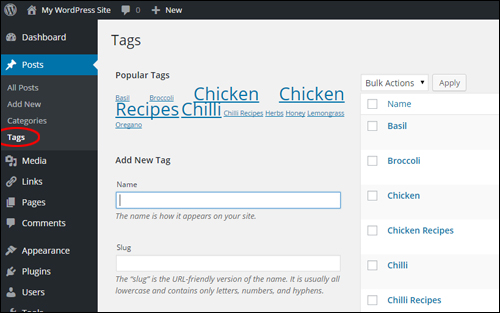
(Tags area)
To insert the widget, select a Tag Cloud widget in the Available Widgets section and drag it to your sidebar …

(WordPress Tag Cloud Widget)
There is very little to configure. You can add a title, and choose whether to display items in the tag cloud using Tags or Categories. Click Save when done …

(Tag Cloud Widget settings)
Your Tag cloud will now display on the sidebar menu …
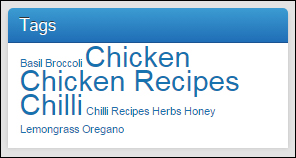
(Tag Cloud widget displaying WordPress tags)
The example below shows the Tag Cloud widget configured for showing Categories instead of Tags …

(Tag cloud set to display categories)
To learn more about using post tags in WordPress, see this tutorial:
Configure Your Archives Section In The Blog Sidebar
To complete this tutorial series, we’ll configure the default Archives Widget, which is a common widget.
As you publish new posts in WordPress, your older posts begin to get pushed further down the chronological list and become less visible to site readers. Your posts are still there, it’s just not as visible.
The Archives Widget lets your site readers access your previously published WordPress posts …
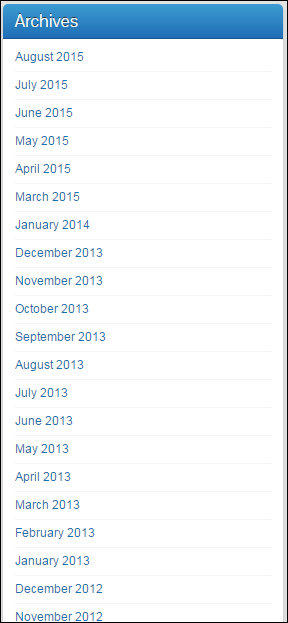
(WordPress Archives Widget)
There’s really very little to set up here. You can add a title if you want, and choose whether to display items in your sidebar widget in a dropdown menu, and show the number of posts . Click Save when finished …
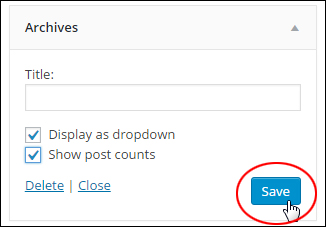
(Archives Widget settings)
The screenshot below shows a published Archives widget set to display posts as a dropdown menu with number of posts enabled …

(WordPress Archives Widget on sidebar)
Now that you know how to configure a number of widgets in WordPress, let’s explore some other useful ways to use WordPress widgets.
WordPress Widgets – Useful Tips
Here are some additional things to know about WordPress widgets:
Add ‘Visibility’ Function To Widgets
Installing the Jetpack plugin not only adds many new widgets to your widgets area …
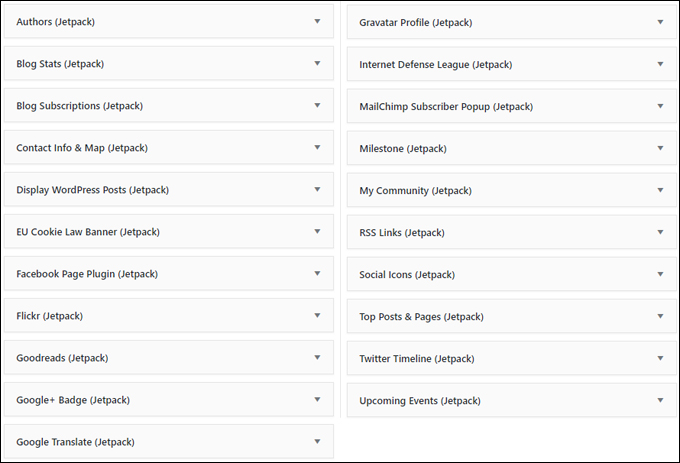
(Jetpack Widgets)
It also adds a useful ‘Visibility’ function to all WordPress widgets …
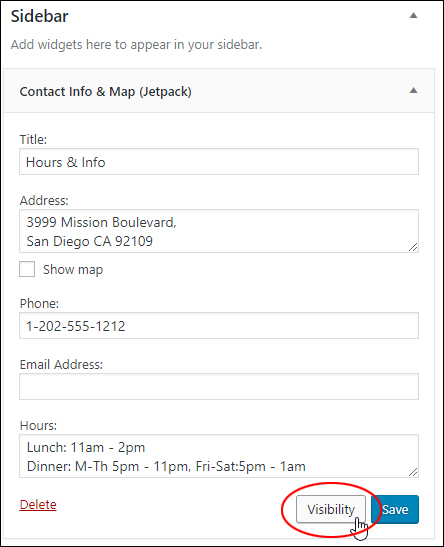
(Jetpack adds ‘Visibility’ to all widgets)
This function lets you specify whether to display or hide widgets from your sidebar based on conditions you set for a particular category, author, user. role, tag, date, or page …
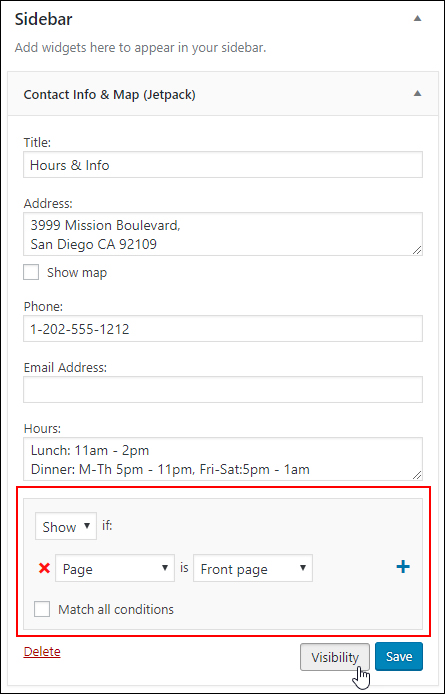
(Set conditions to show or hide widgets)
This is a really useful function to have.
For example, you can:
- Display a widget only on your home page or only on posts published under certain categories, tags, authors, dates, etc.
- Configure widgets to display specific or time-sensitive announcements based on a post’s category, date, etc.
- Configure widgets to display targeted ad banners based on a post’s category or tag.
- Hide widgets from appearing on certain posts or pages to prevent users from being distracted (e.g. remove widgets with ads from your sales pages).
- And more!
To learn more about using the Jetpack plugin, go here:
Override Default Sidebar Widgets
If you see widgets appearing on your site’s sidebar navigation area that aren’t showing up in the active sidebar inside the Appearance > Widgets section, it’s because with some themes, unless you add widgets to the sidebar area, the theme will display its own default set of widgets.
For example, this site displays widgets in the sidebar section …
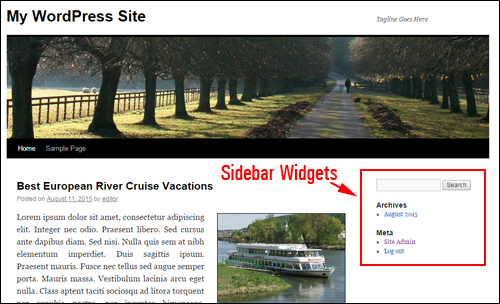
If you look inside the Widgets section, however, no widgets have been added to the available widget areas …
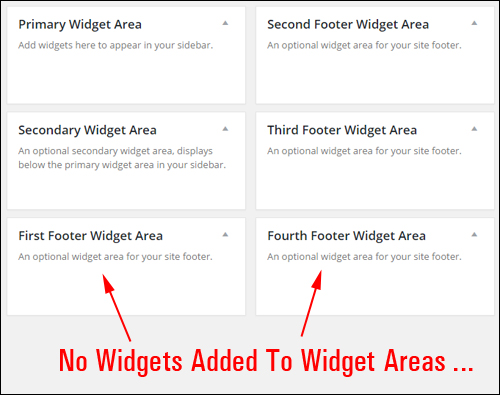
This theme is using default widgets.
As soon as you add one or more widgets to an available widget area, the placeholder widgets will your newly-added widgets will be used instead.
Note: If you don’t want anything to show up in the sidebar, either use a theme page template without a widgets section or just add a blank Text widget to your sidebar navigation section.
Add a blank text widget …
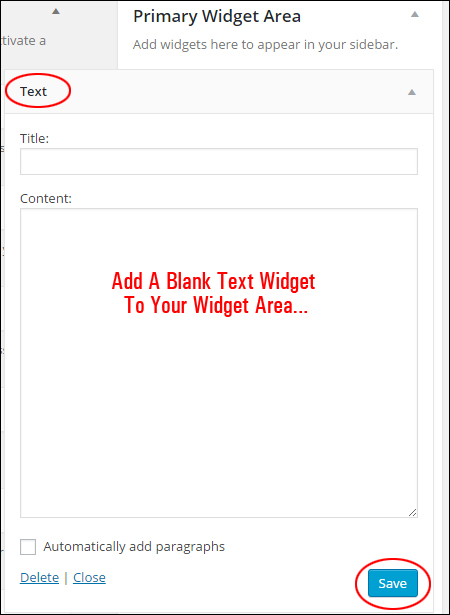
And default widgets won’t display in the sidebar/footer section …
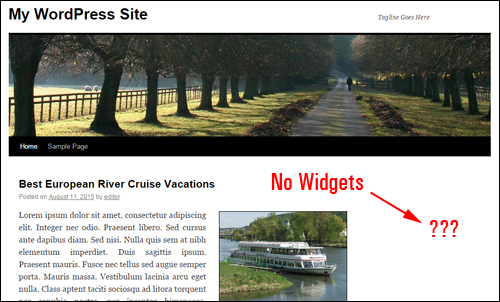
Accessibility Mode
As we have shown you in an earlier example, WordPress lets you quickly and easily rearrange how information displays in areas like your site’s sidebars, footers and navigation menus with only a few clicks of your mouse button, using drag-and-drop technology …
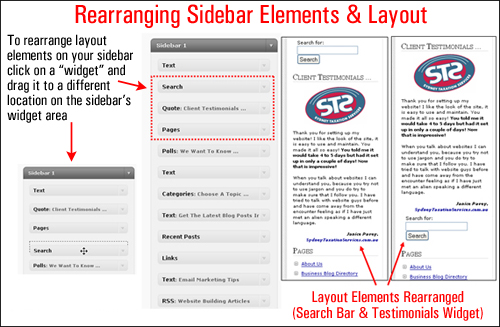
(Rearranging sidebar layout using widgets can help improve your site’s visitor experience)
In the screenshot above, for example, you can see that we have quickly and easily change the layout in the sidebar by switching the search and testimonial sections. This is easily done by simply dragging and dropping the widgets into different positions inside the sidebar widget area.
Reorganizing sidebar layout using widgets can improve your site’s visitor experience.
If, however, you find that you cannot move widgets using drag and drop (e.g. using a mobile device that doesn’t support dragging-and-dropping), you can still work with widgets by enabling Accessibility Mode.
How To Enable Accessibility Mode For WordPress Widgets
Enabling Accessibility Mode, via the Screen Options, allows you to use Add and Edit buttons instead of using drag-and-drop.
To enable Accessibility Mode, log into your dashboard and go to Appearance > Widgets …
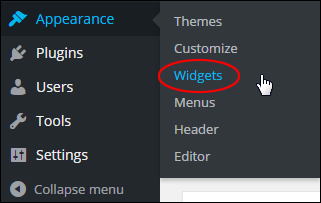
(WordPress Widgets Menu)
Select Screen Options on the top right hand corner of your screen …
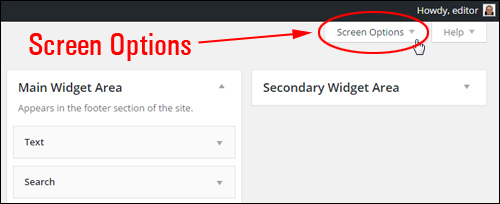
(WordPress Widgets – Screen Options)
Click on Enable accessibility mode …

(Turn on accessibility mode)
Once accessibility mode has been enabled, the widgets in the Available Widgets section will display an Add link, and the widgets in the Active Widgets section will display an Edit link …
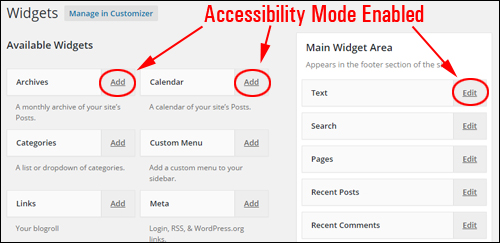
Click on a Widget’s Add link in the Available Widgets section …

A screen displays the selected widget with options for customizing the widget’s settings, selecting the widget location, with dropdown menus that let you specify the position of the widget in the selected area (e.g. position “1”, “2”, “4”, etc.) …
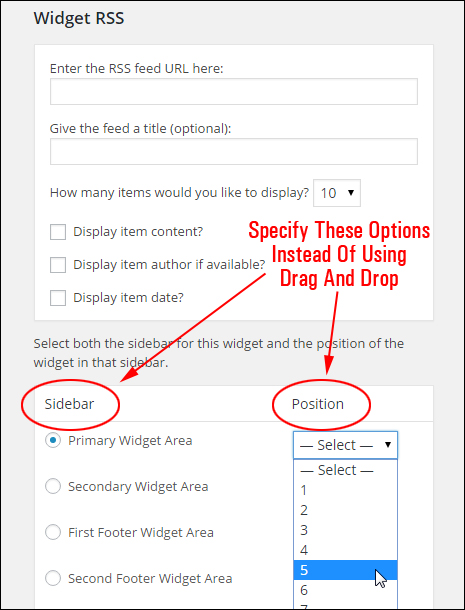
Click Save Widget to add the widget to your Active Widgets section, or Cancel to go back to the previous screen …
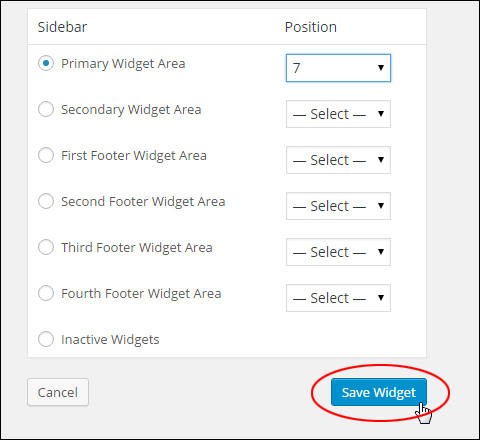
Click on the Edit link of an active widget …
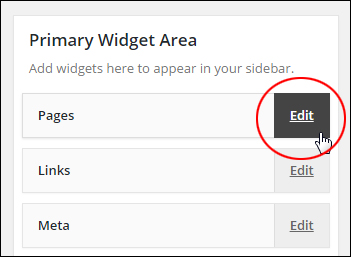
A screen will display the selected widget with options for changing the widget’s settings.
Click Save Widget to update your settings and return to the Active Widgets screen, or click the Delete button to remove the widget from the Active Widgets area …
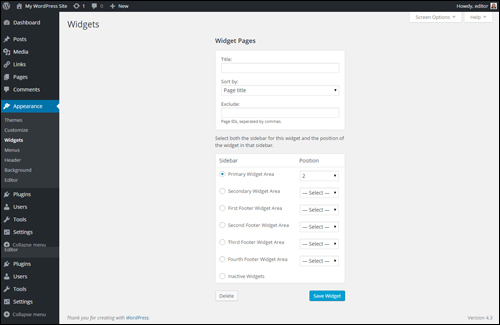
Click on Disable accessibility mode in the Screen Options section to go back to using drag-and-drop …
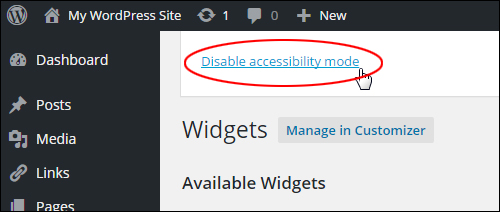
(Turn off accessibility mode)
Create Your Own Sidebar Widgets – A Simple Cheat
Most widgets will either be installed by default when you create a new WordPress site, or be automatically added to your Available Widgets area by plugins that you install on your site.
If you want to create your own sidebar widgets, then here is a simple and easy way:
First, create a new Post and enter the content that you want to display on the sidebar…
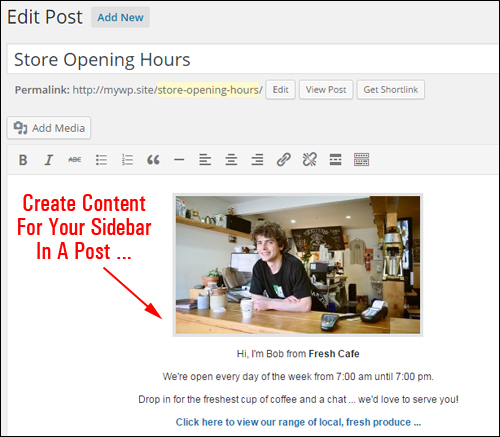
Ensure that any images you plan to use are resized to fit the maximum width of your sidebar menu. Also, keep in mind that there’s no a lot of room to put content on the blog sidebar, so try and keep your information concise.
Also, don’t worry about publishing your Post – all we are after is the content to paste into a widget.
To get the content code, switch to the Text tab …
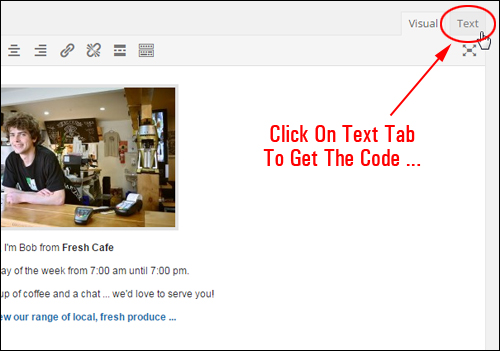
Select everything inside the text editor window and copy it to your clipboard…
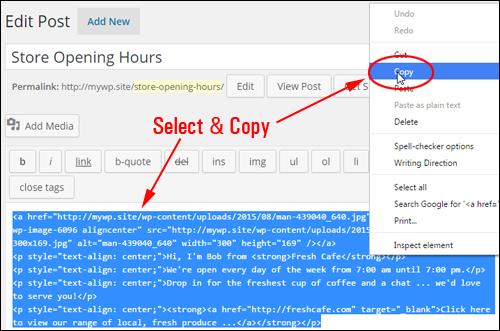
Next, go into your Widgets Area.
Add a new Text widget to your sidebar, paste the content from your clipboard into the content field and click Save …
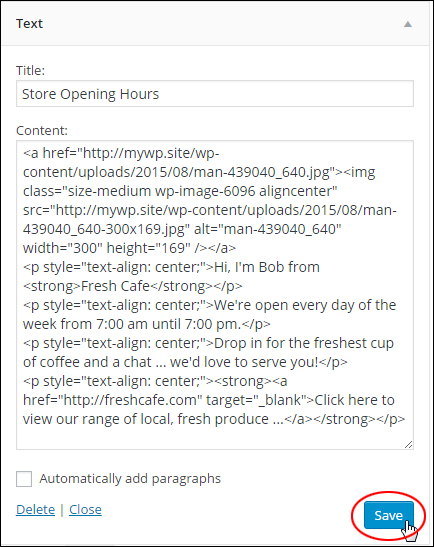
Your new custom widget is now added to your sidebar…
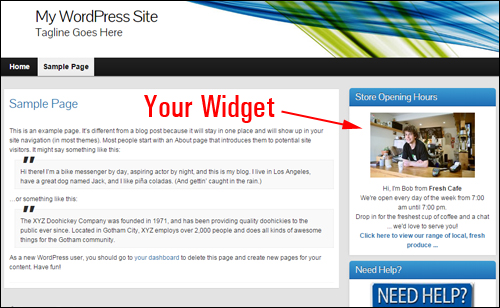
(Create your own sidebar widgets)
Congratulations! Now you know how to use and configure various commonly-used WordPress sidebar widgets.
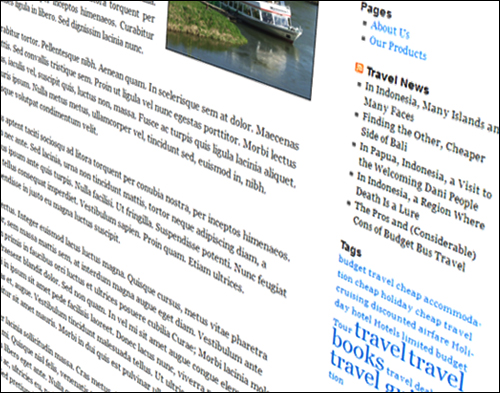
Subscribe below & receive 101+ useful WordPress tips that will help grow your business online faster ...
***
"Wow! I never knew there's so much to learn about WordPress! I bought one of the WordPress for Dummies three years ago, such authors need to be on this course!" - Rich Law, Create A Blog Now